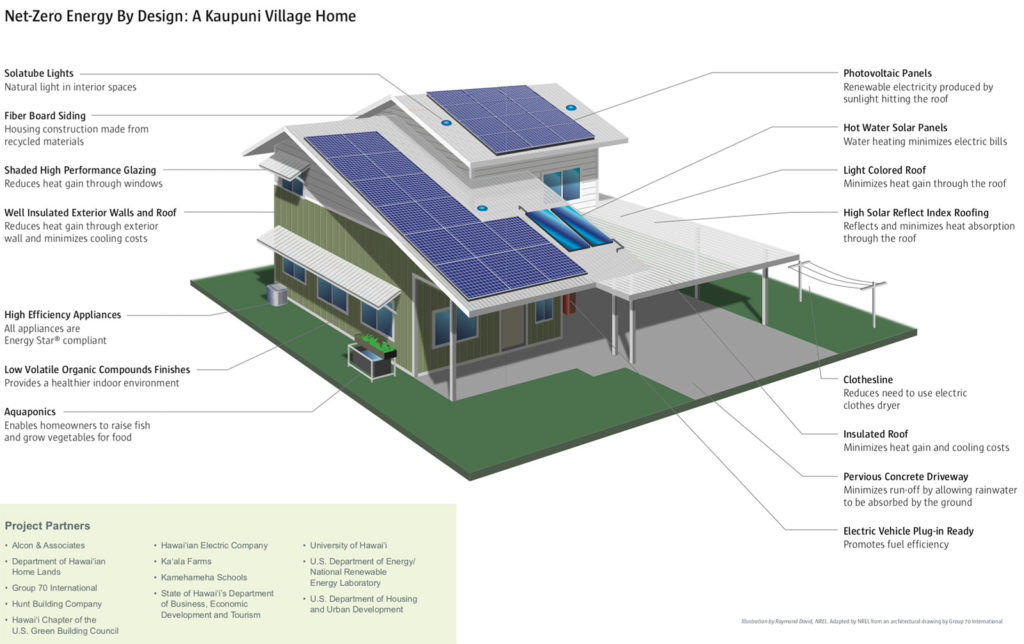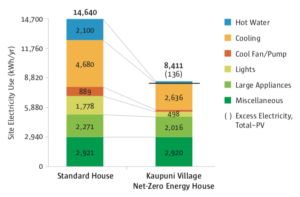A common barrier to net-zero energy buildings is capital costs and feasibility. Kaupuni Village in Oahu, Hawaii, however, has shown that net-zero energy affordable housings may be a viable solution. This is the first net-zero energy affordable housing community, completed in 2011.
Kaupuni Village is led by the Department of Hawaiian Home Lands with assistance from the U.S. Department of Energy (DOE) and the National Renewable Energy Laboratory (NREL) and it’s design attained LEED Platinum status in 2012. This was achieved while keeping the construction costs for the average home at $303,000. This is much lower in comparison to the median home price of $606,000 in Oahu.
There are 19 homes in Kaupuni Village, with each home designed for maximum energy efficiency while also utilising renewable energy systems such as photovoltaics to achieve net-zero energy. The net-zero energy design reduces energy from having an effective building envelope insulation and high performance glazing with shading devices. Solar water heating panels were included to provide hot water, while solatube lights reduced the need for artificial lighting during the day. Efficient compact fluorescent lighting was installed for night use or when natural daylight was insufficient. The full net-zero energy design features are highlighted in the image below.

The net-zero energy design homes of Kaupuni Village was designed to have at least 40% lower energy consumption than the standard baseline home. The graph on the left shows the comparison between the net-zero energy home to a standard home. With the installed photovoltaic system, a 57% reduction in energy was achieved such that the annual electricity consumption was only 8411 kWh/yr. With the PV installed, 8547 kWh/yr was generated each year. This is higher than the electricity demand, making the homes of Kaupuni Village net-zero energy, with excess electricity generated amounting to 136 kWh/yr.
One of the main features for the success of Kaupuni Village is the homeowner’s education. Homeowner education was given to the residents to ensure that they understand the design features of the house and are able to use energy efficiently. With this, the homeowner’s behaviours plays an important role in being able to achieve a net-zero energy house.
It is possible for affordable homes to be net-zero energy. It is imperative that good energy analysis and energy efficiency planning happens from the early stages of the design process. Later changes will accumulate significant costs to the project, in terms of labor, time and materials. As seen with the Kaupuni Village net-zero energy homes, the collaboration between the design team, government entities, local partners, and residents was key to the project’s success.
Kaupuni Village has shown that net-zero energy housing is a viable solution. It is a collective effort from all the stakeholders involved that will help us combat climate change. Here at Green Quarter, we are able to help you achieve your net-zero energy buildings. Feel free to contact us for further consultation on how we can assist you. Alternatively, more information about WGBC’s global project, Advancing Net Zero, can be found in our previous article here.


